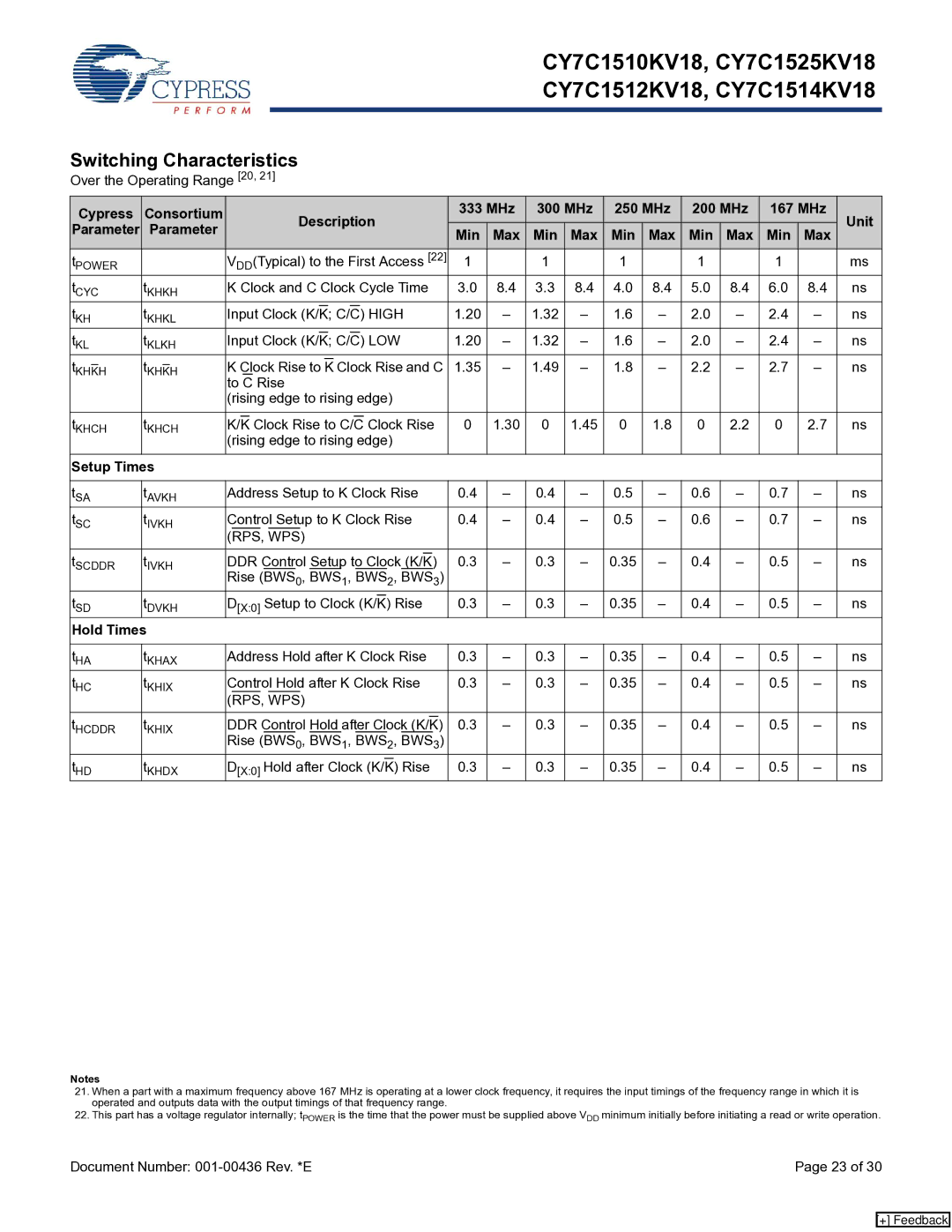CY7C1510KV18, CY7C1514KV18, CY7C1512KV18, CY7C1525KV18 specifications
Cypress Semiconductor, a leading player in the memory solutions market, has developed a range of high-performance memory components, notably the CY7C1525KV18, CY7C1512KV18, CY7C1514KV18, and CY7C1510KV18. These devices are part of the company's advanced SRAM family and are noteworthy for their speed, efficiency, and flexibility in various applications.The CY7C1525KV18 is a 2Mb asynchronous SRAM that boasts low latency and high-speed performance, making it ideal for applications that require fast data access and processing. It features a 1.8V operation, which significantly contributes to its power efficiency, an essential factor in today's energy-conscious designs. The architecture of the CY7C1525KV18 employs a dual-port configuration, enabling simultaneous read and write operations, which enhances the system performance in multi-threaded environments.
Similar in design but tailored for different capacities, the CY7C1512KV18 and CY7C1514KV18 deliver 1.5Mb and 1Mb memory density, respectively. Both chips are built with advanced CMOS technology, ensuring low power consumption and high-speed access times that reach up to 66 MHz. Such speed allows them to support high-performance applications, including networking equipment, telecom systems, and automotive electronics.
The CY7C1510KV18, meanwhile, offers a lower memory capacity at 512Kb but retains the key performance traits of its higher-capacity counterparts. It is particularly well-suited for applications where space is at a premium yet where high-speed data processing is still crucial.
All four SRAM devices are characterized by their fast access times, which can be as low as 10 ns, making them highly effective in environments that require real-time data handling. Moreover, their low standby and active power consumption aligns with the growing demand for energy-efficient solutions in modern electronics.
Additionally, these products come with a variety of packaging options to fit diverse application requirements, enhancing their versatility across industrial, automotive, and consumer electronics sectors. The combination of speed, efficiency, and flexible configurations renders the Cypress CY7C1525KV18, CY7C1512KV18, CY7C1514KV18, and CY7C1510KV18 an excellent choice for engineers seeking reliable high-performance memory solutions.

